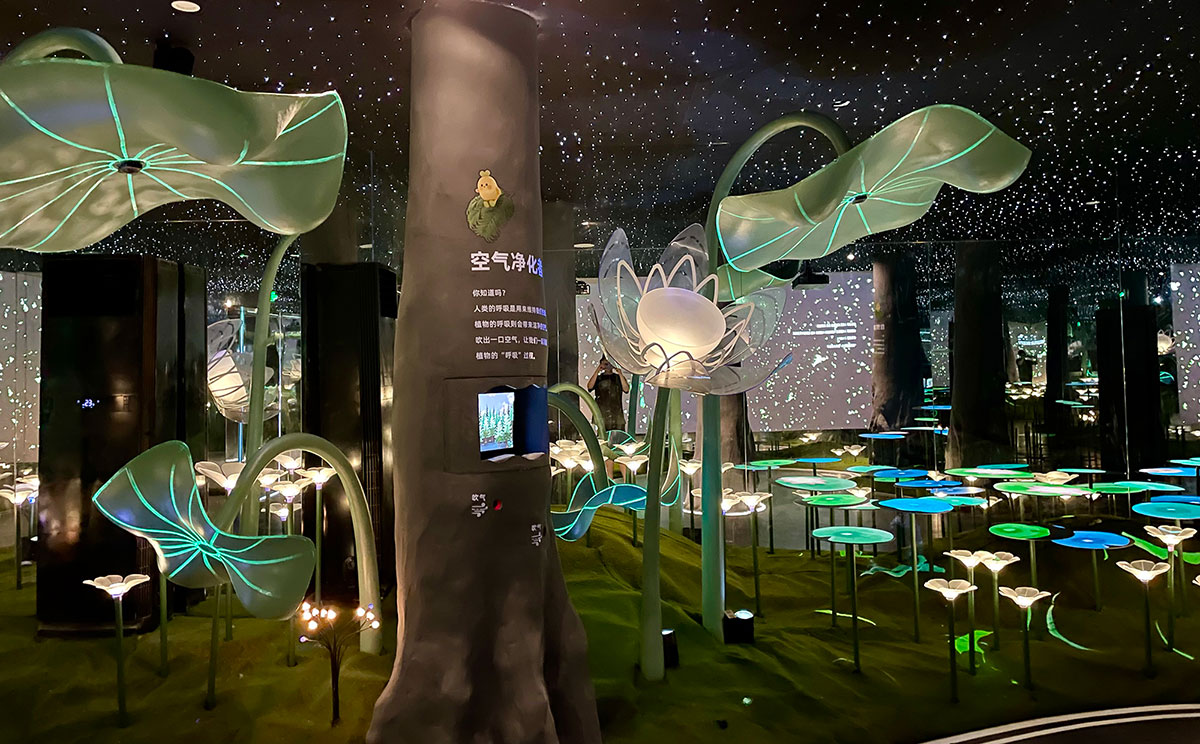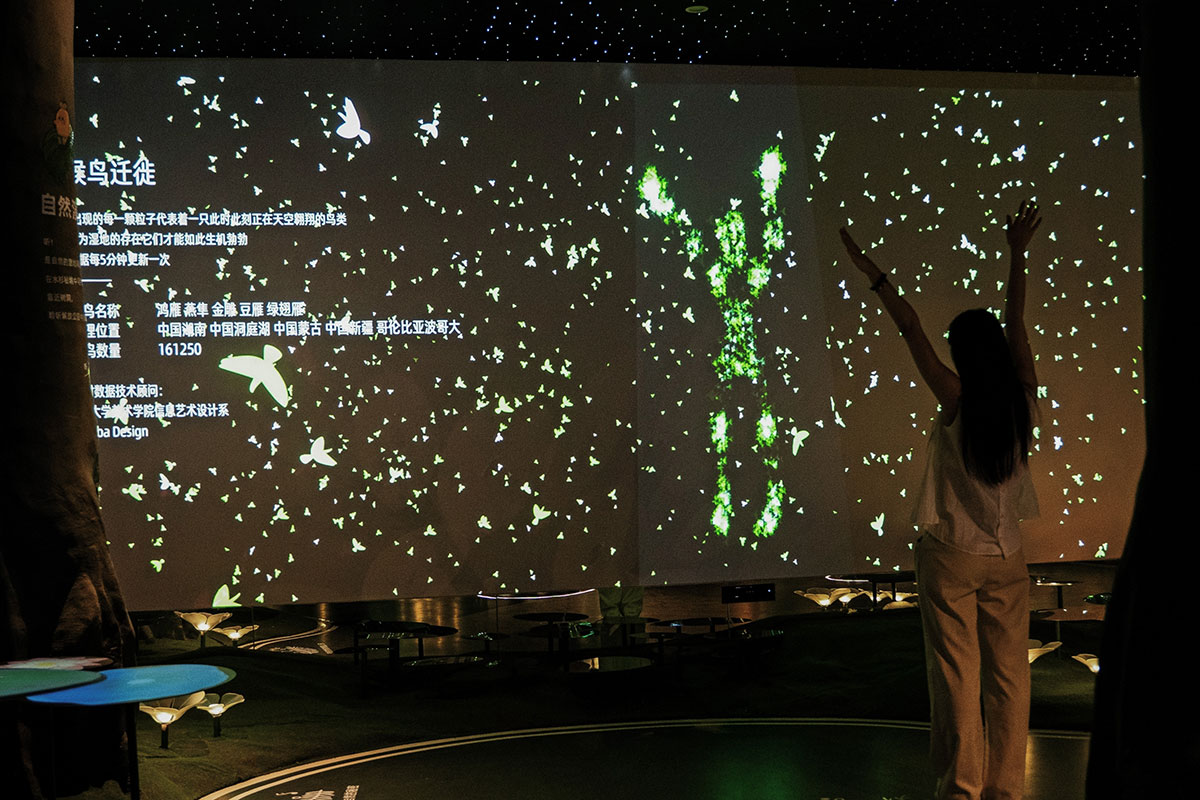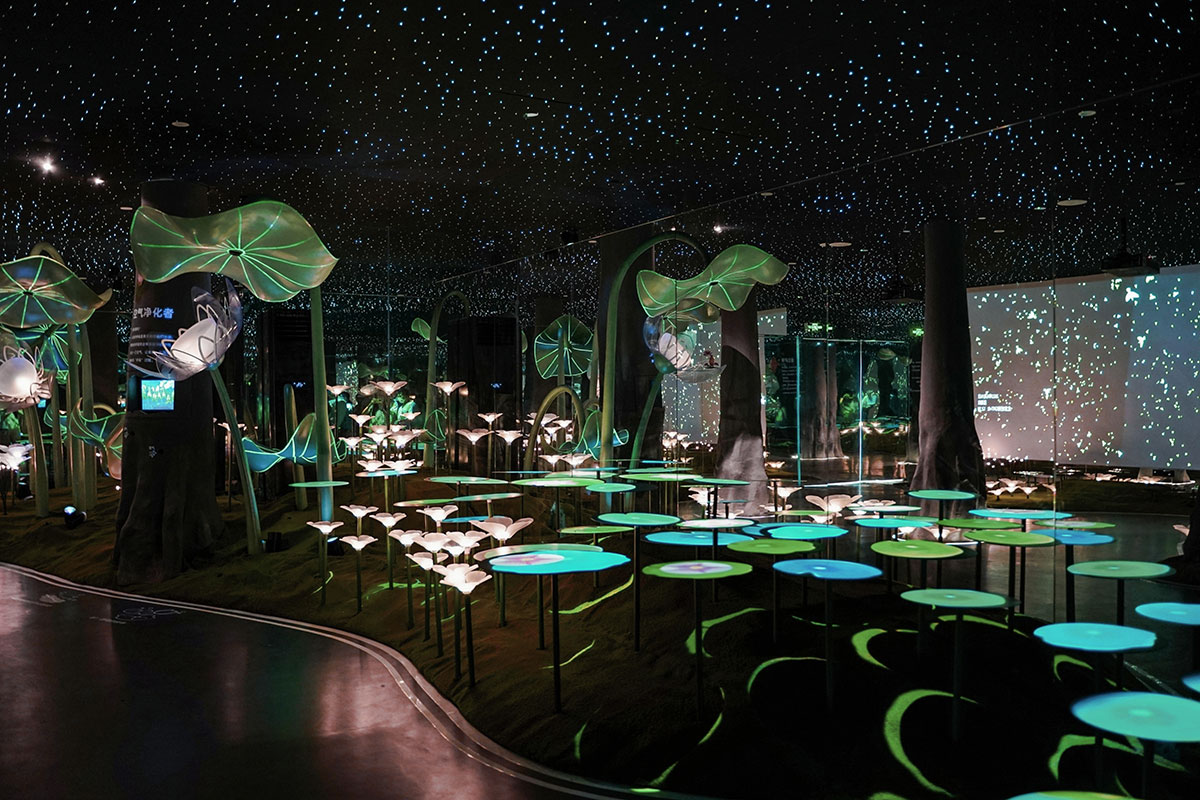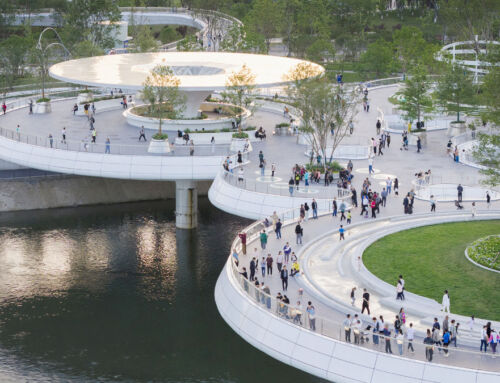Jiefang Park in Wuhan, one of the most populous cities in central China and capital of Hubei province, is a huge public wetland garden. One of the great protagonists of this public garden is the metasequoia, a large tree which, until it was rediscovered in the 1940s, was considered extinct. This tree is not only stars in one of the avenues in Jiefang Park, but also gives its name to a new immersive attraction in the park, which has just been awarded the silver prize at the Berlin Design Awards 2024 in the category of “Interior Design – International Gallery or Exhibit“. It is Metasequoia Wonderland.

Metasequoia Wonderland is an adolescent-oriented interior design, according to the local design studio Hangzhou Uzan Design Technology, the architects of the project. In Metasequoia Wonderland, the designers created “a natural-science educational space that highlights the connections between humans and nature”. To achieve this, they strived to create “an immersive environment (…), breaking through conventional visual scenography and adopting a more artistic multimedia approach“. In other words, the exhibition incorporates and combines light and visual interaction, projections, radar and infrared motion detection and other digital technologies to offer visitors an interactive experience. Let’s look at some examples.

Indeed, through “a real-time ecological data capture and development system”, which the Hangzhou Uzan Design Technology design studio developed in collaboration with Tsinghua University, open-source data on the number of migratory birds in Wuhan is presented in real time as a stream of particles on a screen. Visitors can change the shape of the particle stream with their body movement. Or, thanks to interactive infrared technology, when visitors step on specific locations in the exhibition, an introductory audio about Wuhan’s wetland plants is broadcast, while the lighting of nearby stamens changes synchronously. At the same time, the “radar-based gesture interactive projection” produces an immersive scene, with floating plants and animals emerging from the wetland. Or, along the path described by the visitors, the exhibit shows different kinds of knowledge about the purification of the wetland water.

But, it’s better we keep quiet and let the images in the gallery we have selected for your illustration do the talking. Or even, if you wish, you can take a look at this video:
Source and images: BETTER FUTURE Berlin Design Awards 2024.








